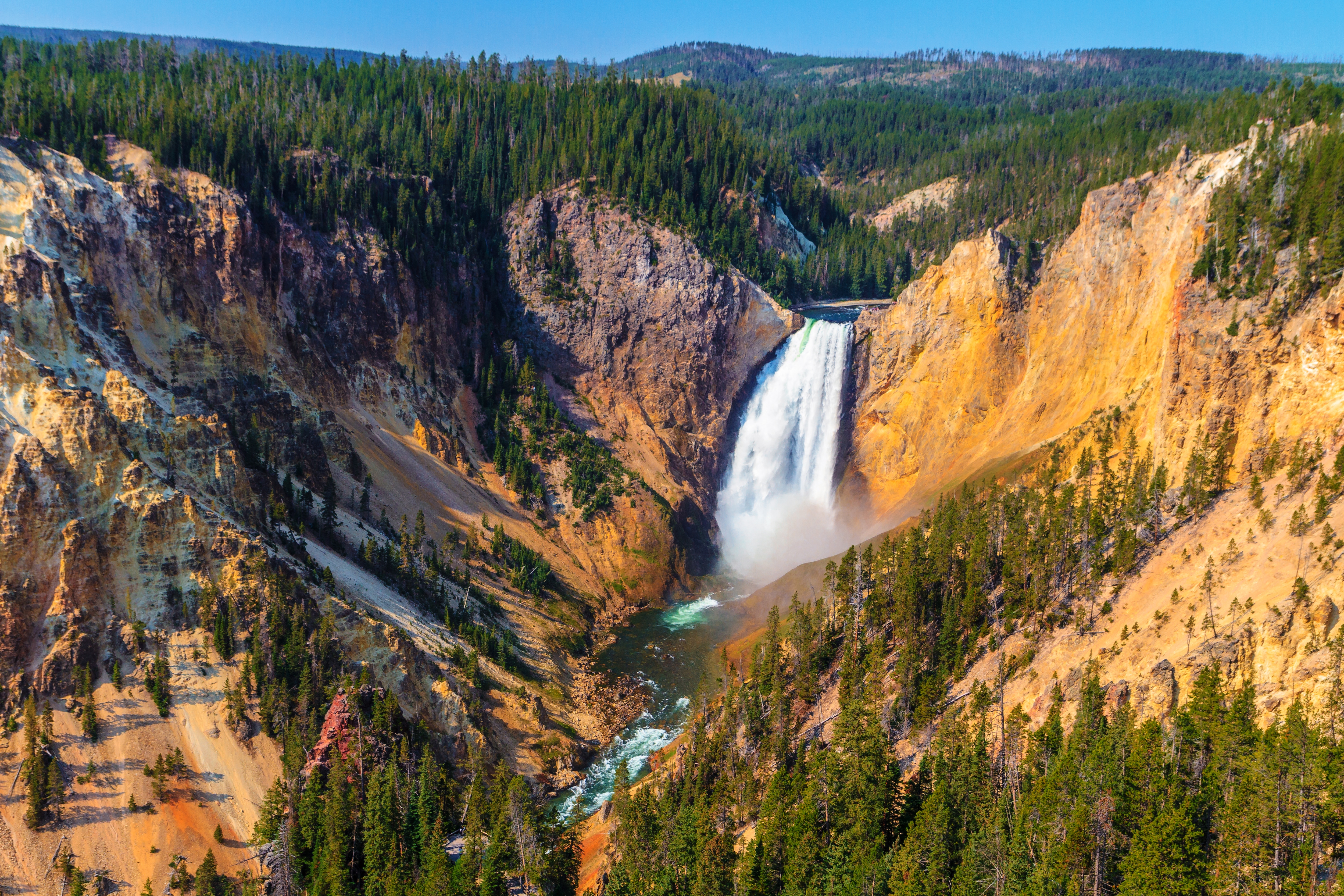Yellowstone National Park has more than 900 miles of hiking trails, offering ample opportunity to leave the crowds behind. Backpacking in Yellowstone is a great way to explore the more remote regions of the park and see spectacular wildlife, geysers and gorgeous high-altitude lakes. For more information about planning your trip, see our Yellowstone National Park Visitor Guide.
The following checklist is designed for a non-guided, non-winter trip in Yellowstone. If you’re part of a guided group, check with the guide company to see what items they provide.
Included in this list are the Ten Essential Systems you should have on every backcountry trip: navigation; sun protection; insulation; illumination; first-aid supplies; fire starter; repair kit and tools; nutrition; hydration; emergency shelter. To learn more, see our Ten Essentials article.
Equipment
- Backpack and raincover
- Tent with guylines and repair sleeve
- Tent footprint (optional)
- Sleeping bag (15° – 29°)
- Sleeping pad
- Whistle, plus signaling mirror
- Multifunction watch with altimeter
- Knife or multi-tool
- Compass
- GPS (optional)
- Map(s) and route description or guidebook
- Trekking poles (optional)
- LED headlamp with extra batteries
- Water treatment system and backup
- Stove and fuel
- Matches or lighter
- Cookset, dishes, bowls, utensils, cups (measuring/drinking)
- Stove
- Rope (30 ft.; for hanging food)
- Repair kits for stove, mattress; duct tape strips
- Fire starter (for emergency survival fire)
Clothing and Footwear
- Wicking, quick-drying underwear
- Wicking, quick-drying sports bra
- Wicking, quick-drying long underwear
- Wicking, quick-drying T-shirt and long-sleeve shirt
- Quick-drying pants (for added tick protection) or shorts
- Fleece jacket or vest, or insulated jacket or vest
- Fleece pants
- Midweight down or synthetic jacket
- Waterproof/breathable rain jacket
- Waterproof/breathable rain pants
- Bandana or Buff
- Sun-shielding hat or ball cap
- Winter hat
- Gloves or mittens
- Hiking boots or hiking shoes suited to terrain
- Socks (synthetic or wool) plus spares
- Gaiters (for added tick protection)
- Sandals (for fording streams and relaxing in camp)
- Swimwear (optional)
- Change of clothes to leave in car
Personal Items
- Sunglasses
- Water bottles (3) or hydration reservoirs
- Plastic zip-lock bags
- Bear spray
- First-aid kit (see our First-Aid Checklist)
- Quick-drying towel
- Camera or helmet cam and extra memory cards (all optional)
- Binoculars (optional)
- Cell phone in waterproof case (don’t rely on service)
- Satellite communicator or personal locator beacon (optional)
- Field guide(s); star identifier (optional)
- Outdoor journal, pen, reading material (optional)
- Fishing gear and permit (optional)
- Large garbage bags to keep items dry (optional; white recommended)
- National Parks pass (yearly pass available from REI.com)
- Credit card; small amount of cash
- Trip itinerary left with friend and under car seat
Toiletries
Many of the following items are optional; tailor the list to suit your personal needs.
- Toothbrush and toothpaste (travel size)
- Toilet paper
- Sanitation trowel
- Personal wipes
- Women’s hygiene items
- Hand sanitizer
- Sunscreen (SPF 30 or higher)
- Lip balm (SPF 30 or higher)
- Insect repellent (effective on ticks, mosquitoes and biting flies)
- Tick-removal tool (optional)
- Biodegradable soap
- Deodorant
- Dental floss
- Spare eyeglasses or contact lenses
- Prescription medications
Food
Quantity varies depending on activity and length of trip.
- Breakfast (oatmeal, granola, freeze-dried breakfast, etc.)
- Lunch (bagels, summer sausage, cheese, smoked salmon, etc.)
- Dinner (pasta, couscous, rice, freeze-dried dinner, etc.)
- Snacks (cookies, GORP, jerky, candy bars, dried fruit, etc.)
- Energy gels
- Energy bars
- Electrolyte replacement drink mix
- Extra day’s supply of food
